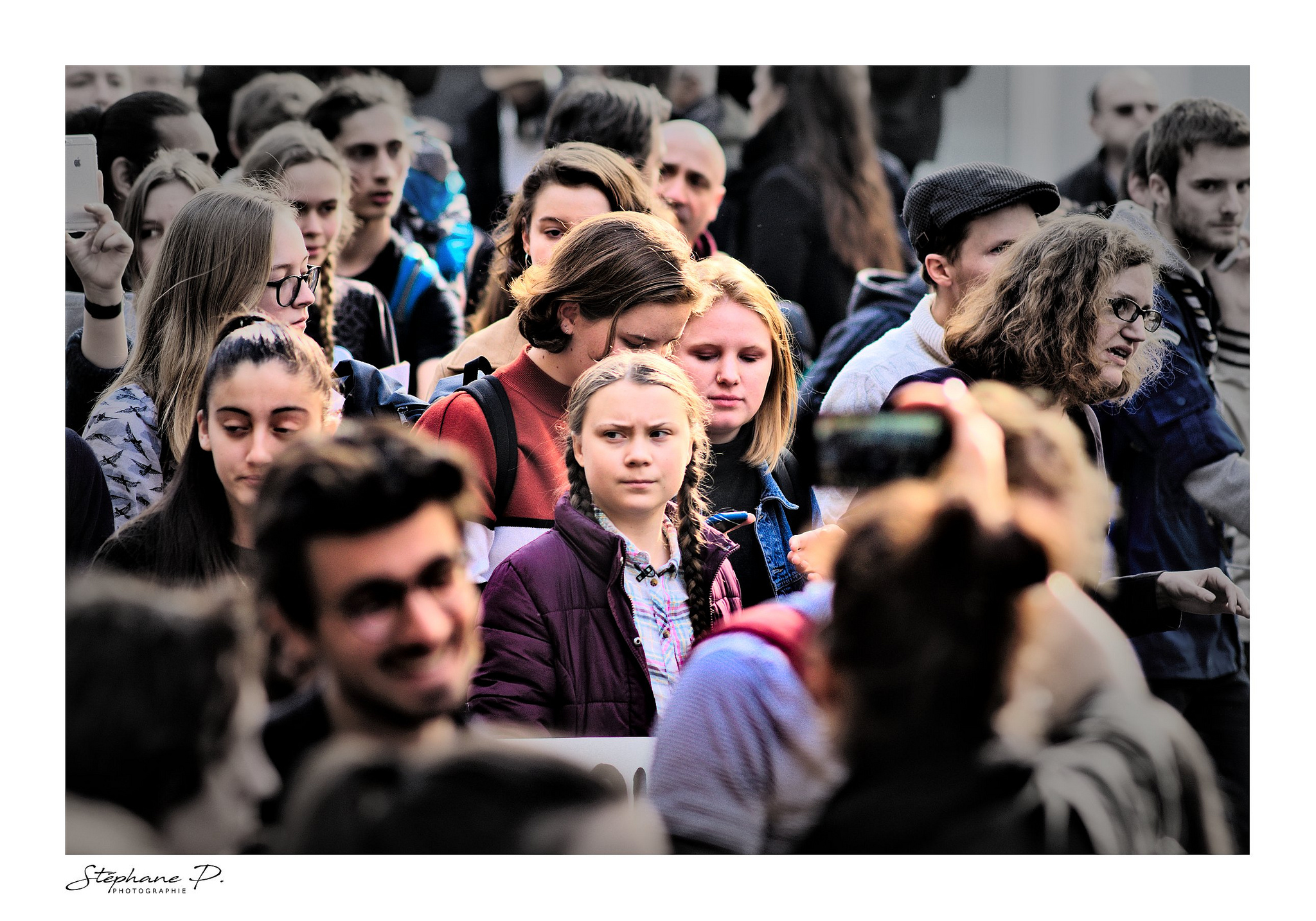Opening
Tell students that you want their opinion on some ideas about climate change.
Designate one end of a classroom wall as “Agree” and the other end as “Disagree.” Ask students to get ready to show their response to each of the following statements by moving to an appropriate point on the wall, whether Agree, Disagree, or somewhere in between.
After each time students respond to a statement, call on two or three students to share quickly why they responded how they did.
- I know a lot about climate change.
- Climate change is something that I worry about often.
- We should all do whatever we can to fight climate change.
- I personally do a lot to fight climate change.
- I feel confident that we will be able to stop climate change.
Summarize for students what you notice about the class’s responses to these questions.
Explain that today students will learn about some things that young people are doing right now to fight climate change.

Youth Activism Skits
Prepare the class to divide into small groups. Explain that each group will be in charge of presenting on one of three youth activist movements to fight climate change. It’s okay to have multiple groups presenting on the same movement; groups with more than 5 members may find it difficult to produce a quality skit.
Each group should research its assigned youth movement using the questions below, and then produce a skit that creatively conveys what the group has discovered. Skits should imagine a dramatic confrontation that sums up what this movement is all about. Tell students that based on their skit, the rest of the class should be able to describe the goals, arguments, strengths, and weaknesses of their youth movement.
Youth movements for students to research:
- The Sunrise Movement: This group holds protests at the offices of lawmakers, often Democrats such as Rep. Nancy Pelosi and Sen. Dianne Feinstein, whose conversation with young activists on February 22, 2019, went viral. Begin your research by watching this video from the Sunrise Movement on Twitter.
- #FridaysforFuture: This movement was started by a 15-year-old Swedish student, Greta Thunberg, who began protesting inaction on climate change every Friday. They are holding weekly strikes in multiple countries, including their biggest strike day so far on March 15, 2019. Begin your research by watching this video from The Guardian.
- Juliana vs. U.S. youth lawsuit: As part of Our Climate Trust, American children and teens are suing the U.S. government for not protecting their constitutional right to life, liberty, and property by supporting a fossil fuel energy system. The case is currently in process with the Ninth Circuit Court of Appeals. Begin your research by watching this video from JoinJuliana.org.
(Note to the teacher: the text of the lawsuit is available online, but because the lawsuit is long, you may wish to provide students researching this movement with the excerpts in this handout in order to help them understand and quote the plaintiffs’ arguments.)
Questions to answer as part of the research:
- Who is the main audience or target of this youth movement?
- What are they trying to convince their audience to do? What would success look like for them?
- What actions are they taking to achieve this goal?
- What are some of the most surprising or interesting arguments they are using?
- What are the biggest strengths of this movement? What makes it powerful?
- What are the biggest weaknesses of this movement? What do its critics say about it?
- What is most important for your classmates to know about this movement?
As they watch each skit, students should take notes on these same questions for peer accountability and active listening.
After all the skits are complete, hold a whole-class discussion to compare and contrast the different youth movements.
- What are their different strengths and weaknesses?
- Which movement are you most excited about?
Closing
Show students this video of school striker Greta Thunberg’s 2018 speech at the UN about climate justice.
Ask students what words or phrases they most notice from Greta’s speech.
Tell students: All of the young people you researched today are confronting those in power and saying that they cannot live life like normal, just waiting for change.
Earlier today, you shared your views on the statement "We should all do whatever we can to fight climate change." What do you think about this statement now?”
Extension Activity: Speechwriting
All of these youth activists use speeches and letters to convince their audiences—lawmakers, courts, voters— about why climate change is harming their future.
Choose an audience and write your own speech for that audience about how climate change affects you personally and what action your audience should take.